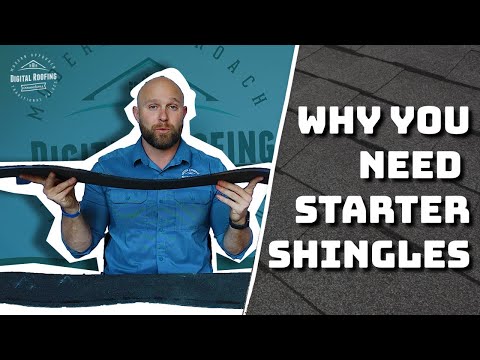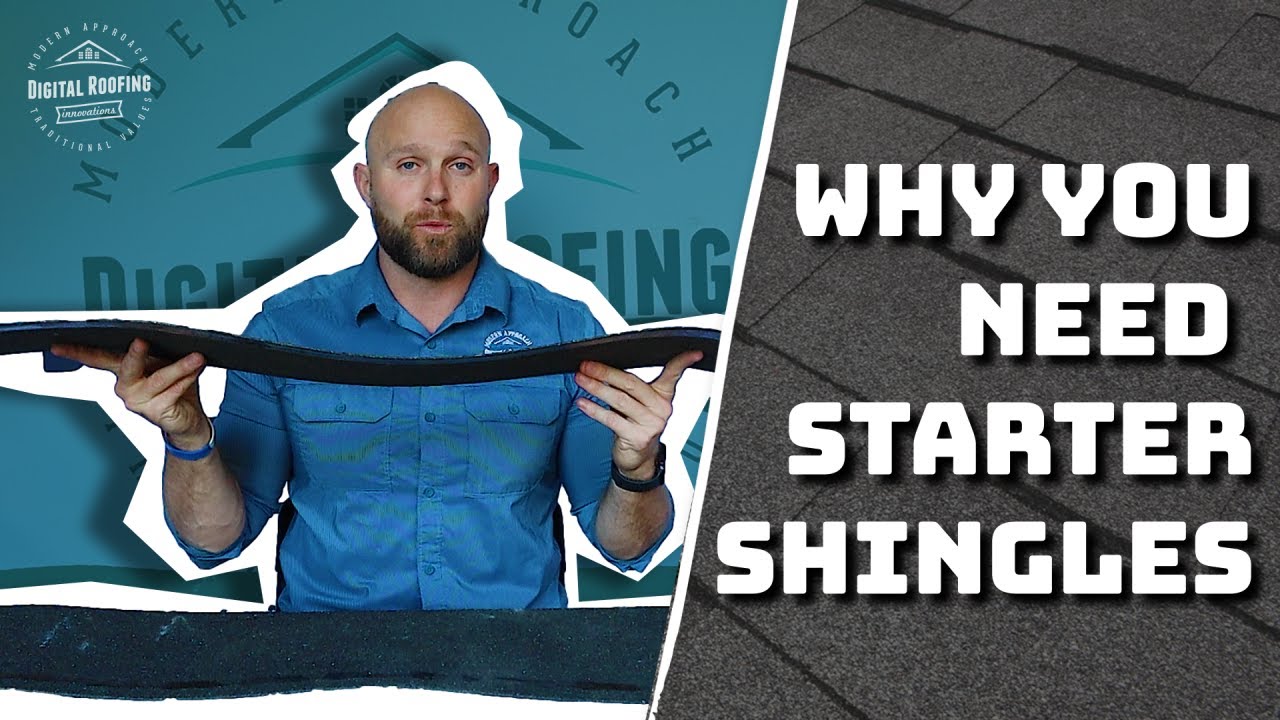Starter shingles are an essential component of any roofing project, and understanding their importance can save you time, money, and headaches in the long run. These shingles serve as the foundation for your entire roof, providing a solid base that helps to protect against leaks, moisture, and other potential damage. Choosing the right starter shingles is crucial, as they not only provide an extra layer of defense, but also ensure proper installation and overall roof longevity. With their innovative design and high-quality materials, starter shingles offer unmatched durability and superior performance. They are specifically engineered to seamlessly integrate with the rest of your roofing system, creating a secure barrier that shields your home from the elements. Whether you’re a homeowner embarking on a DIY project or a professional roofer seeking reliable products, investing in top-notch starter shingles is a smart decision. Don’t compromise on the integrity of your roof – trust in the expertise of starter shingles to provide the protection and peace of mind you deserve.

Starter Shingles: A Comprehensive Overview
| Aspect | Description |
|---|---|
| Definition | Starter shingles, also known as starter strips or starter courses, are the initial layer of shingles installed along the eaves and rakes of a roof before the main shingle installation. They act as a foundation for the roofing system, providing a secure attachment for the first row of shingles. |
| Material | Starter shingles are typically made of the same material as the main shingles, ensuring a consistent appearance and compatibility. Common materials include asphalt, fiberglass, or synthetic blends, each offering their own benefits in terms of durability, weather resistance, and cost-effectiveness. |
| Features | These specialized shingles often incorporate self-sealing adhesive strips or tabs, allowing for a secure bond between the starter course and the subsequent shingle layers. Some starter shingles also feature perforations or cut lines, facilitating easy installation and reducing waste. |
| Purpose | Starter shingles serve multiple essential functions in a roofing system. Firstly, they prevent wind uplift and water infiltration along the roof edges, which are vulnerable areas. Secondly, they establish a straight, level line for shingle installation, ensuring a neat and professional finish. Lastly, they promote proper shingle alignment and prevent potential issues such as blow-offs or premature shingle wear. |
| Installation | Starter shingles are typically installed horizontally along the eaves and vertically up the roof rake, ensuring full coverage of the roof edges. They are secured with nails or staples, following manufacturer guidelines and local building codes. Proper installation techniques are crucial to achieve optimal performance and longevity. |
| Considerations | When selecting starter shingles, it is vital to choose products specifically designed for the type of main shingles being used. This ensures compatibility, adequate protection, and warranty compliance. Additionally, consulting with roofing professionals or manufacturers can help determine the correct quantity and placement of starter shingles based on the specific roof design and local climate conditions. |
The Importance of Roofing Starter Shingles: A Must-Have for Every Roof!
What Are Starter Shingles?
Starter shingles are an essential component of any roofing system. They are the first layer of shingles that are installed at the eaves and rakes of a roof. These specialized shingles serve as a foundation for the rest of the roofing materials and play a crucial role in protecting your home from water damage.
The Purpose of Starter Shingles
Starter shingles are designed to provide a reliable seal and prevent water from infiltrating the roof’s underlying layers. They are installed in such a way that they slightly overhang the roof’s edge, allowing water to run off into the gutters or off the roof entirely. Without starter shingles, water could seep into the roof deck, causing rot, mold, and other structural issues.
Moreover, starter shingles also help prevent wind uplift. By firmly securing the first row of shingles, they create a strong bond that can withstand high winds. This is particularly important in areas prone to hurricanes, tornadoes, or strong storms.
Types of Starter Shingles
There are two main types of starter shingles: traditional three-tab starter shingles and specialized starter strip shingles.
Traditional three-tab starter shingles are similar in appearance to regular three-tab shingles. They have cutouts to create three separate tabs, which are then installed facing the roof edge. These shingles are cost-effective and widely used, but they may not provide the same level of protection as specialized starter strip shingles.
Specialized starter strip shingles are designed specifically for the purpose of starting a roof installation. They are typically wider than regular shingles and have an adhesive strip on the bottom. This adhesive strip ensures a secure bond between the starter shingle and the first course of regular shingles, improving the overall wind resistance of the roof.
Installation Process
The installation of starter shingles is a critical step in the roofing process. It requires careful attention to detail to ensure proper functionality and long-term performance.
First, the roof deck should be clean and free of any debris or old roofing materials. This allows for a smooth and even installation of the starter shingles.
Next, the starter shingles are installed along the eaves of the roof, with an overhang of about 1/4 to 3/8 inch. They are nailed down using roofing nails, ensuring they are firmly secured in place.
Once the eaves are complete, starter shingles are then installed along the rakes of the roof. This ensures a consistent and uniform appearance while providing the necessary protection against water and wind.
The Importance of Quality Starter Shingles
Investing in high-quality starter shingles is crucial for the longevity and performance of your roof. Inferior starter shingles may not provide the necessary protection against water infiltration and wind uplift.
When choosing starter shingles, look for products that are specifically designed for this purpose. Specialized starter strip shingles are often recommended due to their superior functionality and ease of installation.
Additionally, consider the climate and weather conditions of your area. If you live in an area prone to heavy rain or strong winds, it is even more important to select starter shingles that can withstand these elements.
In Conclusion
Starter shingles are an essential component of a well-designed roofing system. They provide a protective barrier against water infiltration and wind uplift, ensuring the longevity and performance of your roof. Whether you opt for traditional three-tab starter shingles or specialized starter strip shingles, make sure to choose high-quality products that are specifically designed for this purpose. By investing in quality starter shingles, you can have peace of mind knowing that your roof is well-prepared to withstand the elements for years to come.

